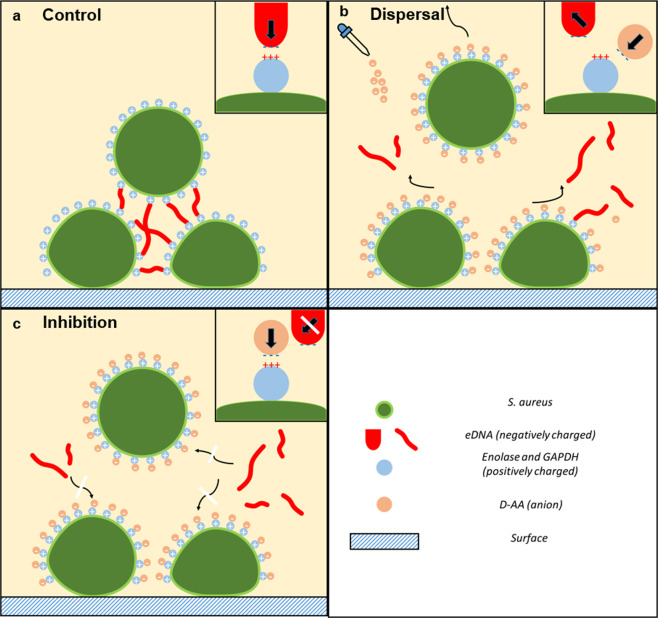Figure 8.
Mechanism of biofilm inhibition and dispersal using D-AA. D-AA exhibit anti-eDNA activity. (a) Normal conditions: eDNA forms intercellular bridges by interacting with surface bound positively charged proteins (enolase and GAPDH) via acid-base interactions. (b) Dispersal: addition of anionic D-AA displaces eDNA from the surface bound positively charged proteins. eDNA is released and the intercellular bridges are broken. (c) Inhibition: the present D-AA interact with surface bound positively charged proteins preventing eDNA from associating with these proteins; intercellular bridges are unable to form; eDNA = extracellular DNA; D-AA = D-Aspartic acid and D-Glutamic acid; GAPDH = glyceraldehyde-3-phosphate dehydrogenase.

